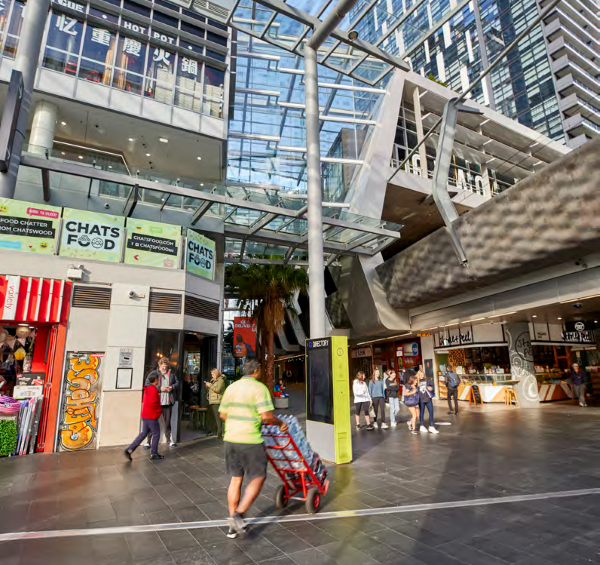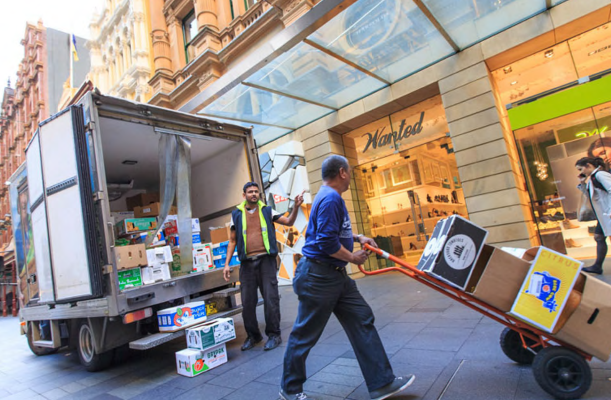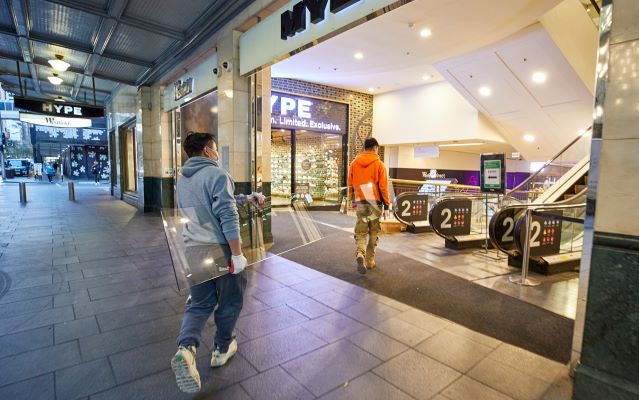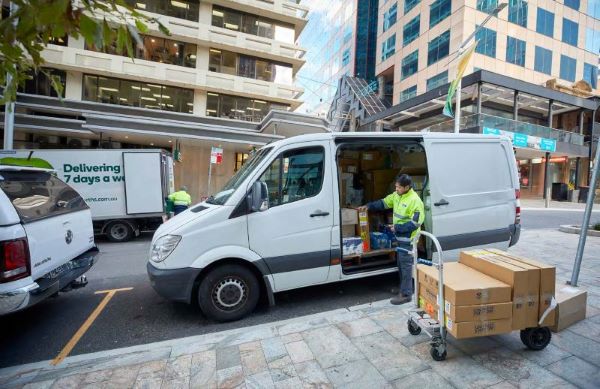Freight and Servicing
Our cities are changing in many ways. Rapid growth is seeing global cities offer more diverse options for working, living, shopping and socialising. A key focus for urban planners is to build better connections between city functions as well as to create places which inspire people to live, socialise, shop and interact within the city environment. All these activities create demand for goods and services.
Last Mile Toolkit
As our cities change and grow, more space is being allocated to placemaking initiatives such as pedestrian spaces, public transport infrastructure and active corridors like cycleways. While contributing to creating more liveable and dynamic urban centres, these initiatives can have a direct impact on accessibility and efficiency for the delivery of goods and services which are essential support functions for cities.
The Last Mile Toolkit has been developed to assist urban planners, developers and government to give greater consideration to freight and servicing demands for new buildings and precincts as part of the planning process. It also promotes better management of freight and servicing for existing buildings. The Toolkit includes:
- Guiding Principles - consider placemaking outcomes and broader benefits of efficient freight and servicing movements
- Measurement and Forecasting Tools - quantify future freight and servicing tasks accurately.
- Design and Management Solutions - facilitate efficient freight and servicing practices
- Future Approaches - draw on best practices from urban environments around the world.
Placemaking
Well planned and managed freight and servicing activities enable good place outcomes. A key objective for urban planners is to create successful places which inspire people to live, socialise, shop and interact within the city environment as well as contributing to people’s health and well-being. This aspiration is commonly referred to as placemaking.
Successful placemaking generates freight and servicing activities, such as food and beverage deliveries, waste services and utility maintenance. A successful place is also one that is sustainable – commercially, operationally and environmentally. A key factor is ensuring freight and servicing activity does not affect amenity including impacting other users such as pedestrians and cyclists. The task must be designed and planned for so that it is efficient yet discrete and unobtrusive. This can only occur if these activities are quantified and incorporated into plans with appropriate facilities provided.
Providing attractive commercial and residential real estate, generating retail activity and improving the public domain are generally the focus of planning for new urban developments. All too often, however, this planning process does not consider the facilities needed to support these land use objectives. This results in inadequate facilities for the freight and servicing activity generated and the inability to adapt to future changing land uses or activity levels.

Last mile freight
Goods are transported through national and international supply chains from their point of manufacture to the customer who will buy or consume them. How this occurs can involve many modes of transport over vast distances. The final delivery to the consumer or store is commonly referred to as the “last mile”

Consider: Last mile delivery is recognised as the most costly element of the supply chain in terms of efficiency and time demands, Recognition of this activity in urban planning can determine whether it is carried out with the least impact on the surrounding urban environment.
Servicing competing demands
As our urban centres become denser, how we service all the needs of our cities and towns, their buildings and their people become more complex. Alongside the need for freight, servicing and maintaining urban centres is also a considerable task.
Freight and servicing vehicles typically share on or off street parking spaces. Trade and service providers, waste collection operators and removalists, for example, are all essential for the day to day life of a city, however they can be overlooked in planning for urban environments.
Vehicle movements generated by servicing activities increase the pressure on the road network and parking locations in the CBD. Servicing activities must be planned for as part of the functioning of a building or precinct. It is important to understand that each activity has its own operating characteristics which must be assessed and accommodated to reduce impacts on amenity and other road users.

How the Last Mile Toolkit can assist users
Freight and servicing activity is essential to the economy. A more detailed understanding of the tasks which support our cities can help planners, developers and traffic consultants make better planning, development and management decisions for high density urban areas. This includes incorporating building serviceability into urban design. The result is enhanced placemaking outcomes and more efficient business solutions.
Serviceability also addresses how building managers can apply best practice management strategies to facilities in existing and newly constructed buildings to ensure that freight and servicing activity supports good amenity in the building and surrounding area.
Contemporary perspectives on urban planning and freight management in this Toolkit also aim to assist freight and logistics operators by providing an overview of current urban planning priorities, and encouraging the uptake of up-to-date, best practice approaches to city servicing.
Planning authorities
Property developers
Traffic consultants
Building managers
Freight and servicing operators
Guiding Plans and Strategies
The Last Mile Toolkit has been developed to support TfNSW’s Future Transport 2056 Strategy and the NSW Freight and Ports Plan 2018–2023.
The Toolkit also refers to key transport planning documents including the TfNSW Guide to Transport Impact Assessment and Government Architect NSW's Practitioners Guide to Movement and Place
Increasing consumer demand
Freight comes in many shapes and forms. Businesses require a multitude of products for their day to day operations as well as to meet their customers’ demands. Customers’ preference for choice is also increasing the number of different suppliers needing to deliver their products.
The emergence of eCommerce has introduced the option for consumers to order online and have products delivered directly to homes and workplaces. With this comes the rising expectation to receive deliveries quickly, even within hours of placing an order.
Consider: Emerging consumer trends are dramatically increasing demand for deliveries and challenging traditional delivery methods. This has implications for building and urban design.

Greater Sydney population growth and changes in freight demand to 2036
The changing freight task
The freight task is growing and evolving to respond to changing urban planning objectives. The Toolkit explores the challenges that urban planners will need to resolve to accommodate the freight task and outline how the freight industry can respond to the changing urban environment.
